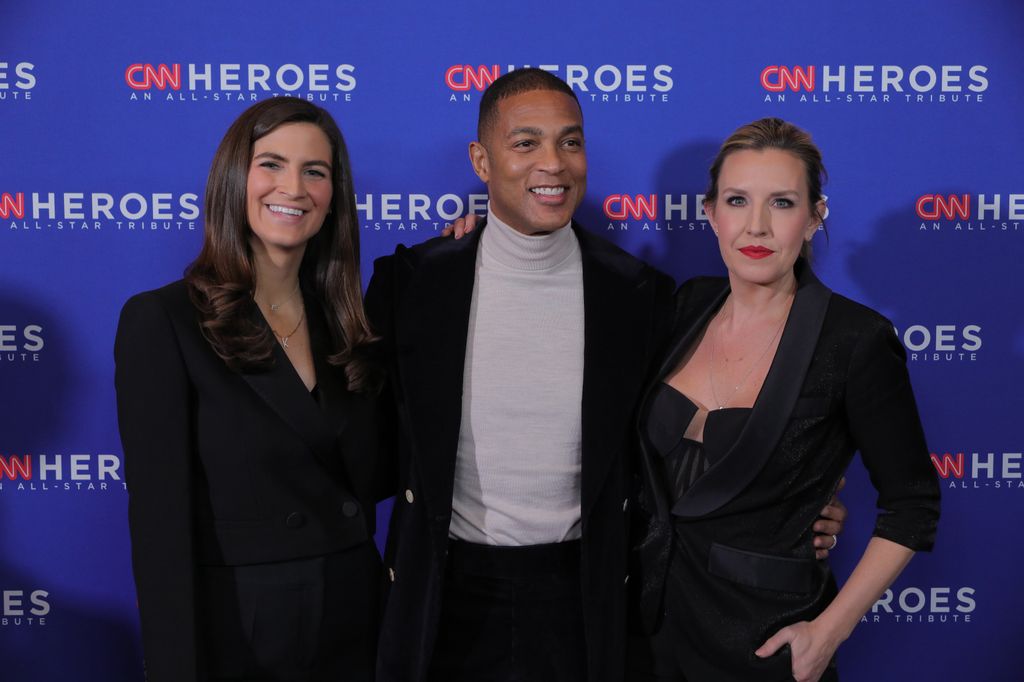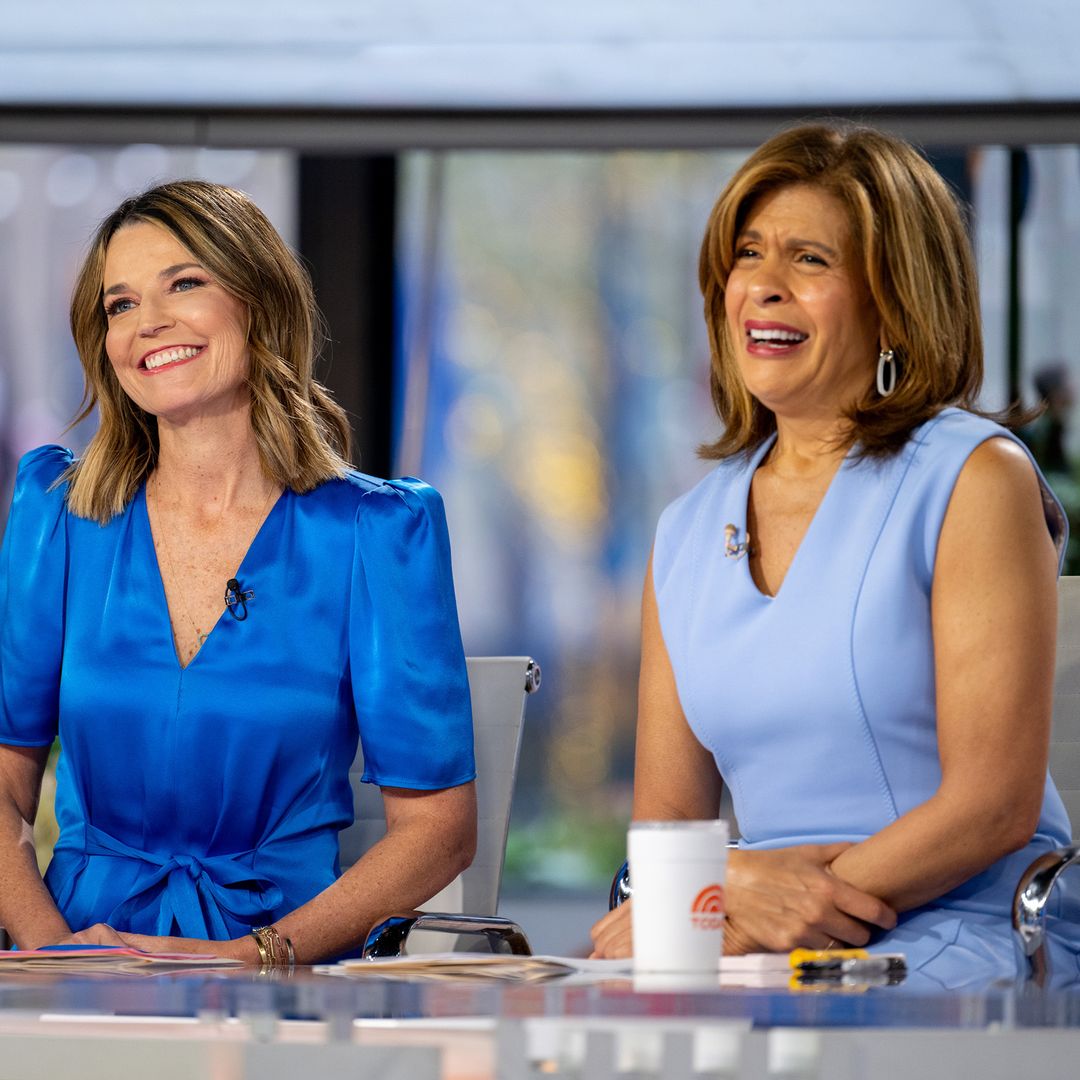Hoda Kotb’s emotional farewell from the Today show on Thursday has highlighted a broader issue facing the television industry, as major networks grapple with shrinking viewership and declining revenues, putting pressure on the salaries of even the most established anchors.
Hoda, who has been a beloved presence on Today for over a decade, announced that her decision to step away was motivated by a desire to spend more time with her family.
However, reports suggest there may be more at play. As traditional morning shows like Today and Good Morning America struggle to maintain their relevance and audience numbers in a rapidly evolving media landscape, networks are taking a hard look at their budgets — and long-standing stars with hefty salaries are becoming prime targets for cost-cutting measures.
A decade ago, Today and Good Morning America were averaging around 5 million viewers each morning. Now, those numbers have dwindled to around 2.5 million, a dramatic drop that has left executives scrambling to adapt.
Compounding the issue, the shows’ key demographic of 25-to-54-year-olds — once the gold standard for advertisers — has also significantly eroded, with around 600,000 viewers remaining in that age group.
This shifting audience dynamic is creating a major dilemma for network bosses, who are under pressure to justify the multi-million dollar contracts of their biggest on-air personalities.
This financial squeeze has been most keenly felt by female anchors, who are facing the brunt of the belt-tightening. NBC, CBS, and other major networks are reportedly moving towards a new strategy: gradually phasing out their most expensive talent in favor of younger, less costly anchors.
Take Kaitlan Collins, for example. The 32-year-old host of CNN’s The Source is earning around $3 million a year — a solid figure by current standards but one that industry analysts believe would have been nearly double if she had broken into the business a decade earlier.
Meanwhile, veteran anchors who previously commanded sky-high salaries are finding themselves in a much less favourable position as contract renewals approach.
Rachel Maddow is one notable exception, pulling in a reported $30 million a year for her MSNBC show. However, reports suggest that her next contract may not see any pay increase, a sign that even the network’s biggest stars are no longer immune to the shifting financial realities.
Rachel’s deal is considered an anomaly in a landscape where even well-established anchors like Norah O’Donnell are being scrutinised for their cost.
At CBS News, reports say that the network’s owner, Skydance-Paramount, is actively considering a plan to replace Norah, who helms CBS Evening News, with a rotating cast of anchors who come at a lower price point.
While Norah’s current salary hasn’t been disclosed, such a move indicates that CBS is looking to trim costs and experiment with new formats to appeal to a more budget-conscious era of TV news.
Then there’s Savannah Guthrie, Hoda’s long-time co-anchor on Today. Despite her high profile and the respect she commands, Savannah’s pay has never quite reached the heights of her male predecessor, Matt Lauer, who famously pocketed a staggering $25 million per year before his ousting over a sexual harassment scandal in 2017.
Savannah’s case is emblematic of a broader issue: as the industry moves to tighten its purse strings, even the most seasoned female anchors are unlikely to see the kind of paydays that were once considered the norm.
This shift comes at a time when networks are increasingly wary of investing in long-term contracts for on-air talent. Executives are turning to newer faces who can be paid a fraction of what seasoned veterans like Hoda and Savannah command.
The contrast is stark when compared to the days of Barbara Walters, Diane Sawyer, and Katie Couric, who maks around $10million per year, whose tenures at the anchor desk were marked by both longevity and lucrative salaries.
But in today’s digital age, where streaming services, social media, and online news are encroaching on traditional TV’s territory, the financial model that once sustained these mega-deals is quickly becoming a relic of the past.
Even so, some veteran anchors have managed to secure a place in the new order — for now. Savannah remains a prominent figure on Today, while Robin Roberts, who makes $18million annually, continues to shine over at Good Morning America. Yet the clock is ticking as networks weigh whether to keep renewing their contracts or to start investing in the next generation of anchors.
The upheaval is most evident in high-profile cases like Norah O’Donnell’s at CBS. According to reports, her position at CBS Evening News is already being quietly evaluated, with network executives mulling over options that would reduce her role in favor of a rotating panel of less costly alternatives. It’s a move that signals a sea change in how networks value — or devalue — their on-air talent.
NBC, too, is said to be eyeing similar changes, as it prepares for contract negotiations that could see more senior anchors being offered less lucrative terms. The days of eight-figure deals seem to be behind us, with networks looking for ways to trim budgets without compromising too much on viewership numbers.
For the current crop of female anchors, the future feels particularly uncertain. While they continue to inspire audiences and set the standard for morning and evening news, the economic pressures facing networks are threatening to diminish their influence and stature. The decisions being made today will shape the industry for years to come — and it’s unclear whether the next generation of female journalists will be able to achieve the same heights as their predecessors.
For Hoda, the decision to leave Today may have been driven by a desire to focus on family, but it also highlights a sobering reality: the era of the highly-paid TV anchor is drawing to a close.
“Thank you for everything,” Hoda told viewers as she signed off for the last time. “This isn’t goodbye, just ‘see you later.’” But for many of her colleagues, the question remains: will there still be a place for them at the anchor desk when the industry finishes its dramatic reshuffle?













